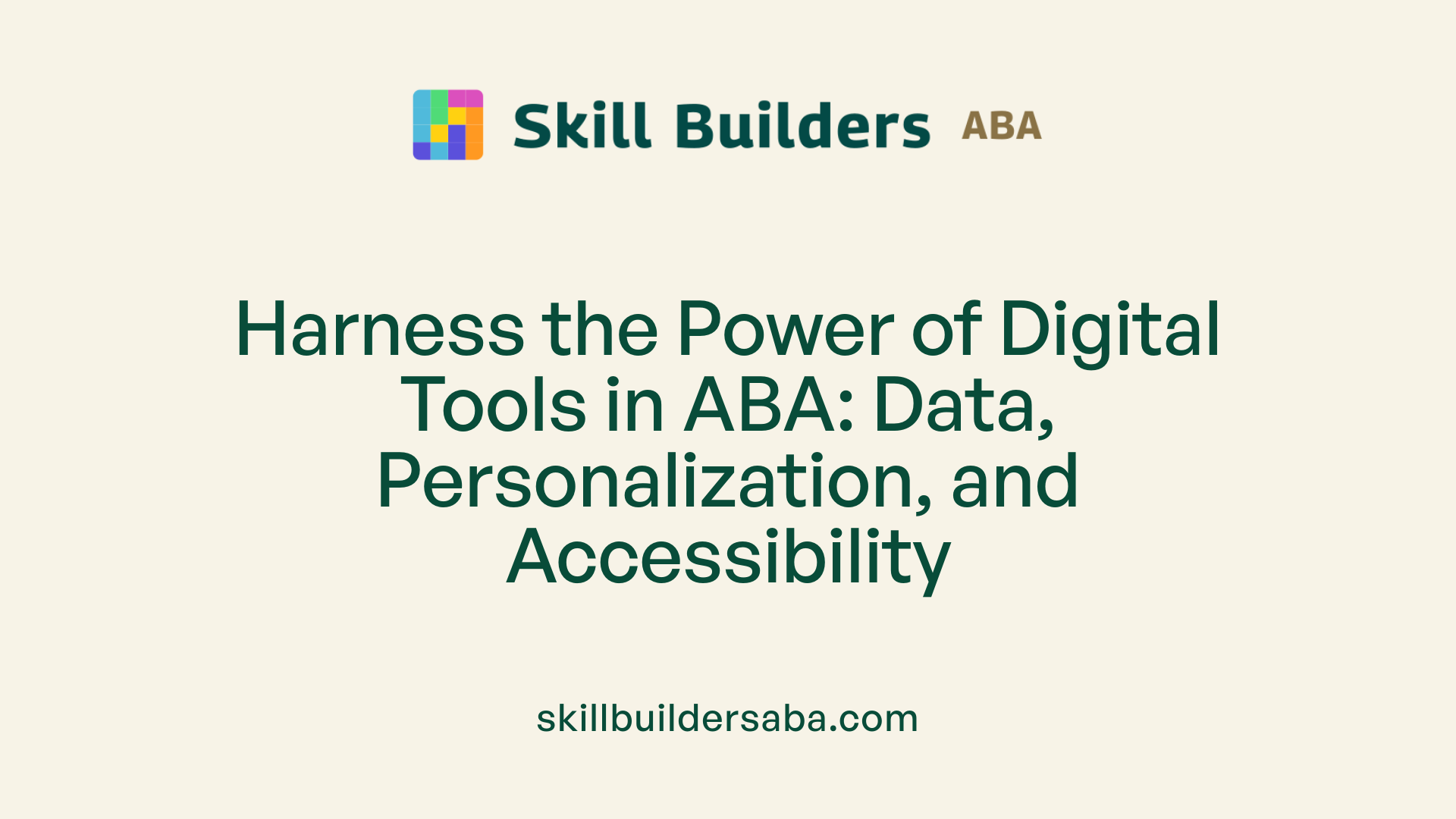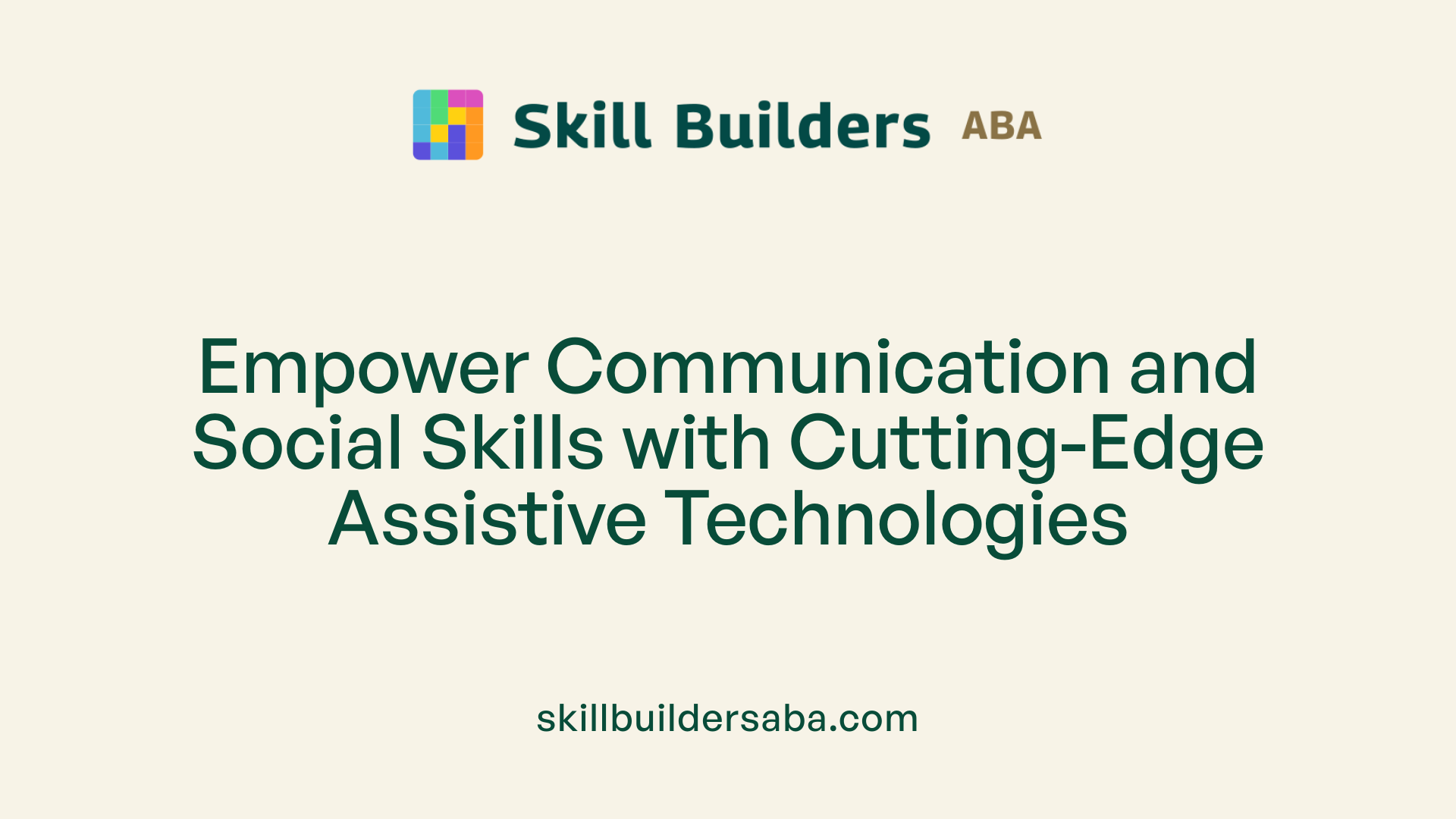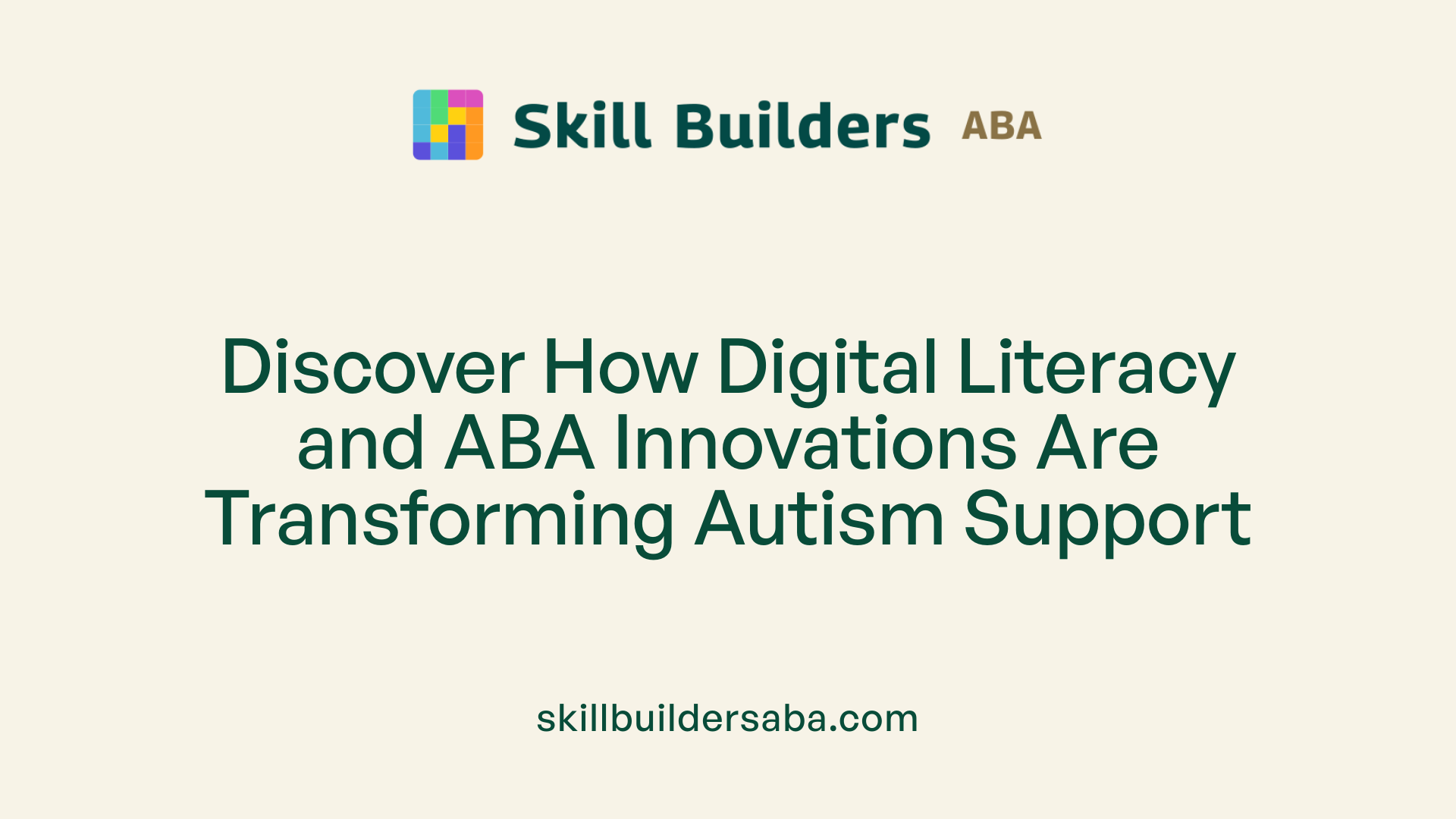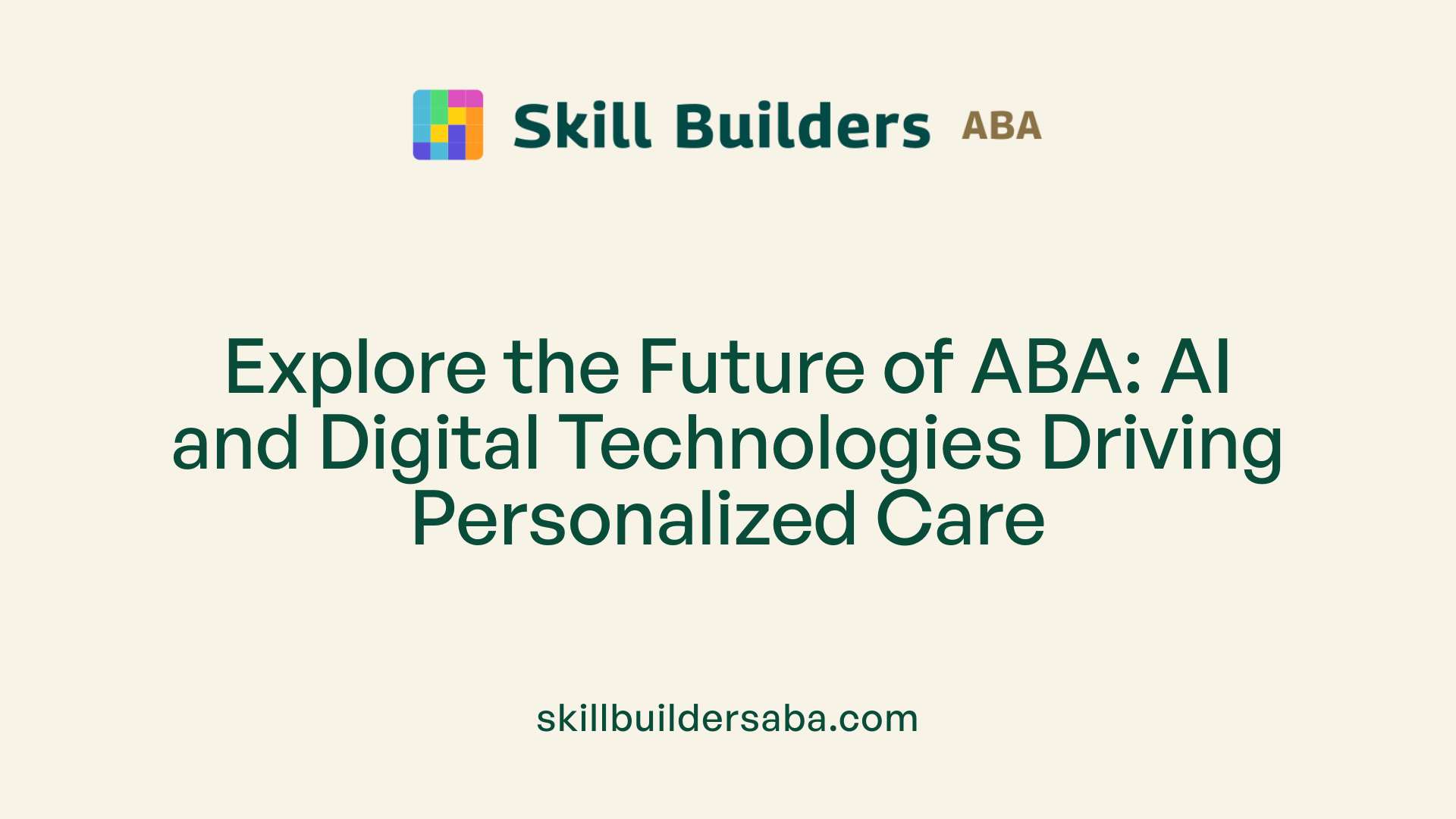
How ABA can support digital literacy
Harnessing Digital Tools for Transformative ABA Practices
Integrating Technology to Enhance ABA Therapy and Digital Literacy
Applied Behavior Analysis (ABA) is rapidly evolving with the integration of digital technology, enhancing intervention strategies to improve communication, social skills, and independence for individuals with autism. This article explores how ABA can incorporate digital tools, the pivotal role of assistive technologies, innovative methods leveraging digital literacy, and the promising future of AI and digital advancements in therapy.
Digital Transformation in ABA: From Data to Personalization

How can ABA incorporate and benefit from digital tools and technology?
Applied Behavior Analysis (ABA) is increasingly adopting digital solutions to enhance its effectiveness and accessibility. Digital platforms such as mobile apps, visual schedules, timers, and assistive devices support therapy in multiple ways. These tools help in teaching communication, managing behaviors, and engaging learners through interactive and motivating activities.
Real-time data collection offered by digital platforms allows therapists and caregivers to monitor progress continuously. Automated tracking systems and AI analysis enable more accurate assessments, helping professionals customize intervention strategies to suit each individual's needs.
Additionally, virtual therapy sessions and online parent training programs significantly increase access to services, especially for families living in remote or underserved areas. These formats reduce travel, accommodate busy schedules, and promote consistent participation.
Emerging innovative technologies also play a role. Virtual reality environments provide safe spaces to practice social skills. Wearables can track physiological data like heart rate and stress, offering insights into emotional states.
Online modules and platforms empower parents with flexible learning options, teaching ABA strategies that they can apply at home. This ongoing education fosters greater involvement and reinforces skills outside formal sessions.
Use of digital platforms for data collection and progress tracking
Digital systems streamline data recording, making it easier for therapists to log behaviors accurately. They facilitate detailed progress reports and trend analysis, assisting with timely decisions regarding treatment adjustments.
Real-time monitoring and data-driven decision making
With continuous data streams, professionals can respond promptly to behavioral changes. AI analysis helps identify patterns and predict outcomes, leading to more personalized and effective interventions.
Online modules and parent training for accessibility
Interactive online content supports parent education and involvement. These modules are designed to be accessible and easy to follow, enabling caregivers to implement ABA techniques confidently at home.
| Digital Tool | Function | Benefit | Example |
|---|---|---|---|
| Mobile Apps | Communication, Learning, Reinforcement | Engagement and skill development | Proloquo2Go, Symbotalk |
| Visual Schedules | Task management, Routine reinforcement | Enhances understanding and independence | Customizable visual timers |
| Wearables | Physiological monitoring | Emotional regulation and stress management | Heart rate tracking devices |
| Online Modules | Parent education | Increased involvement & consistency | ABA parent training courses |
| AI & Machine Learning | Data analysis, prediction | Personalized & predictive interventions | Early autism detection models |
Expanding possibilities with technological advances
The integration of digital tools in ABA facilitates more efficient, personalized, and accessible intervention approaches. As technology continues to evolve, the potential for automation, real-time feedback, and remote therapy grows, promising better outcomes and greater family involvement.
Assistive Technologies: Enhancing Communication and Social Skills
 Assistive technologies and digital devices have become integral to Applied Behavior Analysis (ABA) therapy, offering new ways to support individuals with autism. These tools are designed to improve communication, social interactions, and daily living skills, making therapy more engaging and effective.
Assistive technologies and digital devices have become integral to Applied Behavior Analysis (ABA) therapy, offering new ways to support individuals with autism. These tools are designed to improve communication, social interactions, and daily living skills, making therapy more engaging and effective.
One prominent example is Speech-Generating Devices (SGDs) and Augmentative and Alternative Communication (AAC) systems. These devices help non-verbal or minimally verbal individuals communicate their needs and thoughts through words or symbols displayed on screens. Popular AAC apps like Proloquo2Go and Symbotalk enable users to select images or text that are then spoken aloud, facilitating clearer interaction.
In addition to communication aids, virtual and augmented reality technologies are making notable impacts. Virtual Reality (VR) creates immersive, controlled environments where children can practice social skills, recognize emotions, and engage in pretend play safely. Augmented Reality (AR) adds interactive overlays to real-world settings, enhancing role-playing activities through engaging scenarios and games that promote social engagement.
Video modeling is another effective tool. It involves showing children videos that demonstrate appropriate behaviors or social interactions. This method is less threatening than direct interaction and motivates children to imitate positive behaviors. Interactive software and apps, such as Dino Tim or Otsimo, provide engaging platforms for skill development in areas like matching, counting, and recognizing emotions.
The integration of these technologies allows for personalized, consistent, and motivating interventions. Data collection platforms and AI-powered analysis help therapists track progress and adjust strategies promptly. As technology advances, the role of assistive devices continues to expand, offering promising pathways for greater independence and improved quality of life for individuals on the autism spectrum.
Innovations Merging Digital Literacy with ABA Strategies

What are some methods and innovations in ABA that leverage digital literacy and technological integration?
Recent advancements in ABA therapy showcase a remarkable integration of digital tools designed to improve outcomes for autistic individuals. Mobile applications such as Proloquo2Go, Symbotalk, and Otsimo play a crucial role in supporting speech, behavior, and cognitive skills. These apps provide accessible communication options using words, symbols, and interactive activities, helping children express themselves confidently.
Wearable devices like smartwatches and biometric trackers are increasingly used to gather physiological data such as heart rate and stress levels. This real-time feedback aids therapists and caregivers in understanding the emotional states of children, facilitating timely interventions.
Virtual reality (VR) and augmented reality (AR) environments craft immersive social scenarios where children can safely practice and hone their social skills. These controlled digital spaces reduce anxiety and encourage repetition, which reinforces learning. Similarly, AR headsets can enhance role-playing games, making social interaction engaging and meaningful.
Another significant innovation is the use of artificial intelligence (AI) and machine learning to analyze behavioral patterns. AI tools can process vast amounts of data—from video recordings and biometric signals—to predict behavioral trends, aiding in early detection and personalized program planning. AI-powered systems enable immediate feedback during therapy, allowing for quick adjustments tailored to each child's needs.
Digital platforms are also transforming data collection. Online modules, portals, and apps simplify tracking progress, logging behaviors, and sharing information across therapy teams. This seamless communication ensures that interventions stay consistent and data-driven.
Lastly, telehealth services expand access to ABA therapy, empowering families in remote locations to connect with qualified professionals. Virtual sessions are flexible, promote greater parent involvement, and support continuous learning.
Technologies and Tools in Use
| Technology | Purpose | Features and Benefits |
|---|---|---|
| Mobile Apps | Communication support, skill reinforcement | Interactive, customizable, motivating, easily accessible |
| Wearable Devices | Physiological monitoring, emotional insights | Real-time feedback, stress tracking, biometric data collection |
| Virtual Reality (VR) | Social skills practice, safe environment | Immersive, controlled, enhances engagement |
| Artificial Intelligence | Data analysis, pattern recognition, early detection | Automates observations, personalizes interventions, predicts outcomes |
| Digital Platforms | Data logging, progress tracking | Timely insights, collaborative, user-friendly |
| Telehealth | Remote therapy, increased accessibility | Flexible scheduling, expanded reach, parent participation |
These technological advances exemplify how digital literacy drives modern ABA therapy, offering tailored, engaging, and effective strategies to support autistic individuals.
AI and Digital Advancements: Future of Personalized ABA Therapy

What is the potential and future of AI and digital advancements in improving ABA therapy for individuals with autism?
AI and digital technologies are transforming ABA therapy by enabling more personalized and effective interventions. Automated data collection tools—such as video recordings, biometric sensors, and voice analysis—allow therapists to gather accurate, real-time information about a child's behaviors and emotional states. This minimizes human error and frees up therapists to focus on direct engagement.
Predictive modeling and machine learning are helping identify autism earlier and tailor treatment plans to each individual's needs. These tools analyze large data sets from wearable devices, videos, and audio to track behavioral patterns, monitor progress, and forecast outcomes.
Robotics and smart devices further support social skill development and communication. For example, robots like NAO teach social interactions through engaging activities, while wearable IoT devices track physiological responses.
Together, these innovations promise a future where interventions are more timely, precise, and accessible. However, they also raise important ethical questions regarding data privacy and the need for ongoing clinician oversight. Balancing technological benefits with ethical responsibility will be essential as these tools become more integrated into ABA therapy.
Empowering Progress Through Technology
The integration of digital tools, assistive technologies, and AI into ABA therapy signifies a transformative shift towards more personalized, engaging, and accessible interventions. These innovations not only improve therapeutic outcomes but also empower individuals with autism to develop crucial digital literacy skills essential for today’s interconnected world. As the field continues to evolve, a thoughtful balance of technology, ethical standards, and human oversight will be pivotal in harnessing their full potential, paving the way for a future where every individual receives optimal support tailored to their unique needs.
References
- Technology and Applied Behavior Analysis (ABA)
- The Role of Technology in ABA Therapy
- Stamford, CT - Technology Use In ABA Therapy
- The Integration of ABA With Artificial Intelligence (AI)
- Top 7 Technological ABA Innovations Transforming Therapy
- The Future of ABA Therapy: Advancements and ...
- Innovative Tools for Enhanced Autism Intervention
Reach Out Today
Learn more about how we can support your child’s growth and development. Contact us to discuss our services and availability in your area.
.svg)